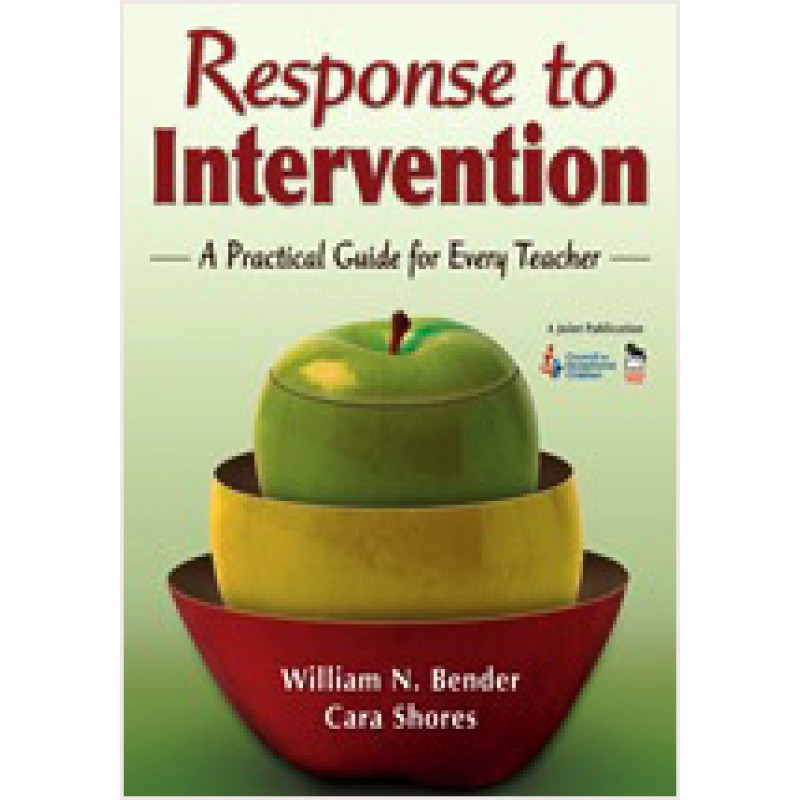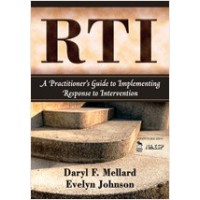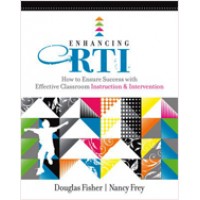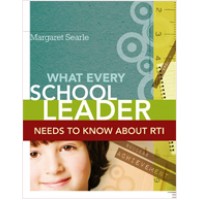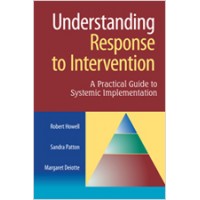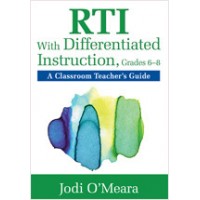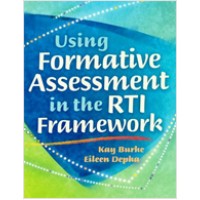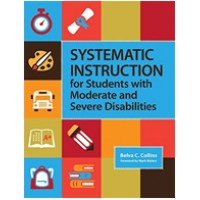Response to Intervention: A Practical Guide for Every Teacher
| Author(s) | William N. Bender, Cara Shores |
| ISBN10 | 1412953863 |
| ISBN13 | 9781412953863 |
| Format | Paperback |
| Pages | 160 |
| Year Publish | 2007 April |
Synopsis
"Of the many RTI materials published today, this one is user-friendly and much broader in scope. Written in clear and understandable yet professional language, this excellent book is appropriate for all K–12 educators and administrators."
—Carla Osberg, Program Specialist, Special Populations
Nebraska Department of Education
"Offers a unique organization of key concepts, and addresses current implementation issues with integrity. The strategies, suggestions, and tips contribute to the overall reader-friendliness of the book. The comparison/contrast of the problem-solving and standard treatment protocol approaches is well written and provides the reader information to determine the best approach for the students, school, or district."
—Linda Palenchar, Coordinator, Office of Special Education
West Virginia Department of Education
Discover a resource that shows teachers how to implement RTI in the classroom!
As a result of NCLB legislation and the reauthorization of IDEA 2004, Response to Intervention (RTI) is now a mandated process for documenting the existence or nonexistence of a learning disability. For educators new to the RTI approach, Response to Intervention presents an overview of key concepts with guidelines for accountability practices that benefit students in inclusive classrooms.
Presenting the three tiers of RTI techniques, the authors demonstrate how general and special education teachers can use research-based interventions effectively to individualize instruction, monitor individual student progress, and implement strategies to meet the specific needs of all students.
Response to Intervention assists educators with the basic and necessary steps to provide students with a Fair and Appropriate Public Education (FAPE) in the Least Restrictive Environment (LRE), and includes:
- Vignettes, examples, and forms based on the problem-solving and standards-based approaches to RTI
- A chapter illustrating how RTI techniques benefit students who are economically underprivileged and/or culturally and linguistically diverse
- A chapter devoted to Frequently Asked Questions
Featuring helpful charts and reproducibles, this timely resource is sure to become a valuable guide as educators implement programs to document how individual students respond to specific educational interventions.
About the Authors:
William N. Bender began his career by teaching eighth- and ninth-grade students in the public schools. He worked in higher education for 28 years and published over 60 research articles and 24 books in education. He specializes in instructional strategies for all students and is recognized as a national leader on instructional tactics, response to intervention, and differentiated instruction. Dr. Bender believes his job is to inform audiences across the nation of innovative, up to date information, based on current applied research. Dr. Bender received his Ph.D. in Special Education from the University of North Carolina and currently consults with schools and districts in the United States and Canada.
Cara Shores began her career as a special education teacher and taught children in both pullout and inclusive classrooms. Shores has trained thousands of teachers and administrators across the United States on practical strategies for inclusion, co-teaching, and increasing achievement for all students through differentiated instruction and RTI. She provides regional and national training for the Council for Exceptional Children. She is co-author of Response to Intervention: A Practical Guide for Every Teacher. Shores now serves as the president of Wesley Educational Services. She received her master’s degree and educational specialists’s degree from the University of West Georgia and has served as student support services coordinator and district director of special education.

